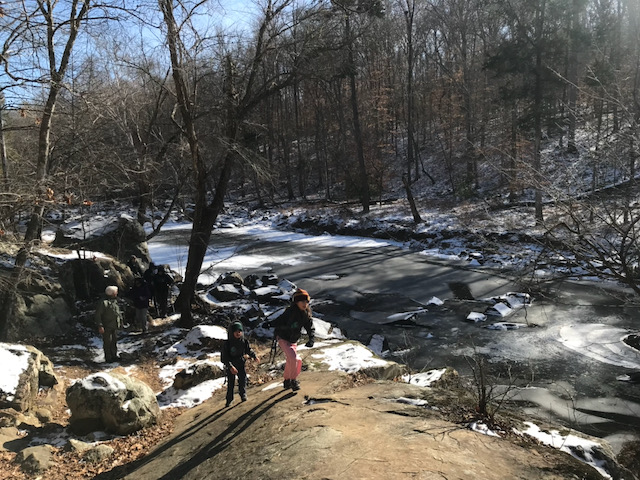We love winter hiking. Why? We’ll refer you to this post from two years ago to explain why. Today, as we do every year at this time, we trot out our tips for how you can take the perceived discomfort out of winter hiking, making it possible to better appreciate what to many hikers is the sport’s lost season.
These tips from our GetBackpacking! Winter Camp tips sheet, which also covers cold-weather camping. (See below for how you can get a copy of the full 8-page guide.)
Gearing up
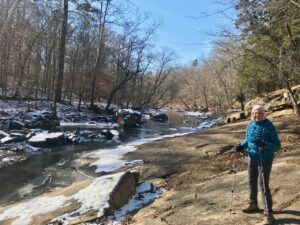
Preparation is huge for any hike. It’s huger still when it’s cold.
- Layering
Quickly, here’s how to dress for a cold-weather hike:
-
- Base layer The base layer is the layer of clothing next to your skin. Your base layer should be thin and made of a synthetic or high-tech wool that wicks the moisture from your body. Dry skin = warmer skin. It should not, under any circumstances, be cotton. Sweat sticks to cotton, the sweaty cotton sticks to your skin, your body expends lots of energy trying to warm your cold, sweaty skin, and you run the risk of hypothermia.
- Insulating layer Generally a slightly heavier layer that helps create a pocket of air warmed by your body between it and the base layer. Synthetic is preferable, wool is again preferred.
- Outer shell This is especially important when the weather gets cold (30s and lower) and there’s wind. An outer shell is a slick fabric that will shed rain and wind. A good outer shell will have some sort of vent system to keep condensation from building inside. Zippers in the armpits is one popular option as is mesh under the arms and along the side of the torso.
- Pants. Nylon pants that break the wind and retain your body heat are good. Our legs typically don’t sweat as much, so having pants that don’t “breath” isn’t as crucial as it is with your outer shell. Convertible pants — with zip-off legs — are great for those days when the mid-day sun heats things up.
- Gloves. On the trail, thin polyester gloves, even glove liners, are good at keeping heat from leaking out our fingertips while you hike along. If you’re expecting wet weather, invest in a pair of waterproof, or at least water-resistant, gloves.
- Hat. Heat can escape through your noggin (especially if you don’t have a thick natural covering), so cover up. In less cold weather, and if you’re the type who hikes at a good clip, ear warmers may be all you need. But for colder weather, a slower pace and standing around at camp, you can’t beat a close-fitting wool beanie.
- Socks. Wool hiking socks come in three weights: light for summer hiking, mid for the shoulder seasons, heavy for winter camping. Some folks like to improve their insulation potential (and reduce their blister potential) with liner socks. Note that wearing two or more pairs of socks can result in a tight boot, reducing circulation: among other things, that will make your feet even colder. Pack an extra pair of socks: even a little sweat can cool you rapidly in winter. Switch when you break for lunch.
- Sunglasses: Earth is closer to the sun in our winter than in our summer. Thus, don’t underestimate the force of its glare. Even if there’s no snow, a bright winter sun can still damage your eyes.
- When in doubt … If you’re undecided between a lighter fleece and heavier fleece, pack both. And pack more snacks (see “Food & Drink,” below) than you might in warmer weather; you burn more calories in the cold.
Food & drink
-
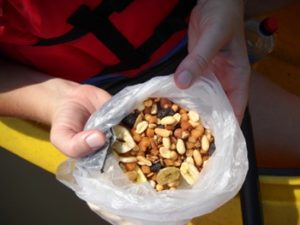
A little gorp helps fuel the winter furnace. Food. In addition to the calories you burn hiking, your body will burn extra calories trying to keep you warm in the cold. It’s recommended that you derive 60-65 percent of your calories from carbohydrates, 20-25 percent from proteins, 10-15 percent from fats. The nutrition facts on the packaging should help you see how well a meal meets those requirements. Above all, though, pack something you’ll look forward to eating; if it’s something blech that simply meets nutritional requirements, there’s a good chance you won’t eat it.
- Snacks. Snacking on the trail is important in cold weather because your stores run down more quickly. Keep whatever you choose — GORP, nuts, a trail bar — handy, in your pack’s hip belt, for instance. And remember the carb/protein/fats mix.
On the trail
-
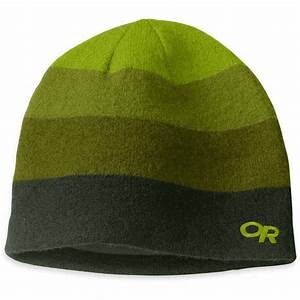
Regulate your heat with a hat Regulate your thermostat with hat & gloves. An easy and efficient way to regulate body heat is with hat and gloves. You can quickly lose heat through your head and hands. Start your hike with a wool cap and gloves to keep heat from escaping. Once you warm up, try shedding one or the other. Give it a few minutes to see what effect the change is having
- Layer up at breaks. When you stop for a snack, add a layer before you grab your gorp. You’ll want to retain the heat you built up hiking, and this will do it.
- Hike in the sun. On an especially cold day you can up your odds of staying warm by choosing a trail that lets in a bit more light. That can mean picking a trail that you know has more hardwoods, which have shed their umbrella of leaves for winter, rather than hiking under evergreen pines. That can mean looking for trails that are double-track, which are wider and thus have a wider opening in the canopy, rather than narrower single-track. A couple ways to distinguish between the two on a map: a wider double-track may be marked with parallel dashed lines, and trails marked as “multiuse,” especially if they allow horses, are more likely double-track.
- Hike in the sun II. Pick a trail with a southern exposure. You’ll need to know how to read a topo map to pick a south-facing trail. Or have the number for the local ranger station handy.
- Hike early. You’ll want to take advantage of the sun as much as possible. So start early, when the trail is still be in shadows, and finish while the sun is at its brightest and warmest, rather than finishing as the sun is setting and the air is cooling.
- Hike early II. Remember that the sun sets early this time of year and that the temperature can drop like a rock once the sun sets.
- Start cool. Too many folks start a hike all bundled up: five minutes down the trail they’re sweating. Instead, right before heading out, strip off that outer layer. You’ll be cool for a minute or two, but should warm up quickly.
- Drink! In cold weather, you may not feel thirsty. But you need to drink for these reasons: breathing cold, dry air drains the body of liquid; we do sweat, although the cold quickly turns it to vapor, so we don’t realize it; you may feel less thirsty but your active body needs fluids to operate.
When you finish
Don’t linger at the trailhead when you finish. The heat your body has built up hiking will dissipate quickly, causing a chill to set in. And the last memory you want from a wonderful winter day on the trail is being cold at the end.
Besides, isn’t there a beer with your name on it waiting at home?
* * *
Lunch with GetHiking!
Want to know more about winter hiking? Join us at noon on Friday, Dec. 16, when Lunch with GetHiking! holds forth on winter camping. A good opportunity to ask questions as well. Click here to join us.
Guide to banishing the brrr
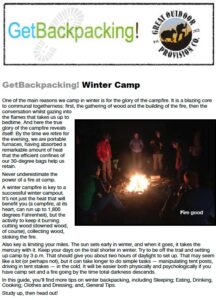 Our 8-page GetBackpacking! Winter Camp tips guide includes additional insights into staying warm on the trail as well thoughts on staying warm on a winter camping trip. Find it here.
Our 8-page GetBackpacking! Winter Camp tips guide includes additional insights into staying warm on the trail as well thoughts on staying warm on a winter camping trip. Find it here.
